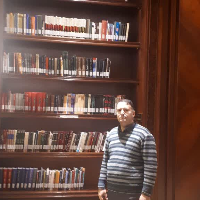Saudi Arabia and the Iran Dilemma: A Probable Scenario in the 2030 Horizon
The Islamic Revolution in Iran profoundly transformed the regional dynamics of West Asia. Over the past few decades, Iran and Saudi Arabia, two major regional powers, have held fundamentally different and often conflicting ideologies, priorities, and goals for regional peace and stability (Zehraa et al., 2018). These differences became even more pronounced in 2010 and with the emergence of movements and uprisings known as the Islamic Awakening. While Iran supported these uprisings, the prospect of such movements extending into Saudi Arabia became a nightmare for its leaders and monarchy. Consequently, countering these uprisings became the top priority for the Saudi leadership. The two nations found themselves entangled in a complex web of suspicion and tension, which escalated over the subsequent years and ultimately led to the formal severance of diplomatic relations in 2016. Although the resumption of relations in 2023, after seven years, offers a glimmer of hope for a new chapter, it is essential to remain realistic and avoid excessive optimism or idealism. In fact, numerous challenges lie ahead for both nations, as deep-seated differences remain unresolved. For example, immediately after the reopening of embassies, the two countries faced new issues, including the Arash Gas Field and discussions about Saudi Arabia joining the Abraham Accords. Normalizing relations is just the first step, and both nations now find themselves on the threshold of making crucial decisions about their future. After years of extensive tension and conflict, both sides are now sitting at the negotiation table. The potential for a new chapter marked by cooperation and understanding is within reach. Yet, can they break free from the current cycle of tension and discord? Will they continue their efforts to reduce tension? How may future global and regional events impact their measures? There are also other and relevant questions about the future of Iran–Saudi Arabia relations, so the future of their relations remains uncertain and ambiguous. The present study aimed to address the following questions: What are the possible scenarios for Saudi Arabia’s foreign policy towards the Islamic Republic of Iran in the 2030 horizons?
Literature Review:
Naderi and Tajik (2018) presented three scenarios for the future of Iran–Saudi relations: 1) the end of doubts (confrontation), 2) constructive chaos (support for the Axis of Resistance), and 3) stand-up fist (balance of power). They believe the likely scenarios are constructive chaos and stand-up fist. Dehghani-Firouzabadi et al. (2021) found that subjective, identity, and semantic factors (e.g., a lack of shared identity, perceived threats, and differing definitions of security) would significantly impact the relations between the two countries over the next decade. In The Saudi–Iranian Rivalry and the Future of Middle East Security, Terrill (2011) revealed that conflict and deep tension between the two countries have prevented the creation of link loops. In an article titled “Muting the Trumpets of Sabotage: Saudi Arabia, the US and the Quest to Securitize Iran,” Mabon (2017) claimed that Saudi would continue its efforts to reduce Iran’s regional influence. In “The Prospect of the Relationship Between the Islamic Republic of Iran and the Saudi Arabia: Plausible Scenarios”, Diansaee and Yurtaev (2017) indicated that due to historical background and conflicting interests, the probable scenario governing the relations between the two countries would be one of tension and conflict. Likewise, Rostami et al. (2016) considered continued tensions and differences as the likely future scenario for Iran–Saudi relations.The studies reviewed above are predominantly characterized by deep pessimism, leading to reductionism. They also depicted tension and conflict as the only scenario, ignoring alternative futures or surprise endings. Moreover, they focused solely on near-term relations without clarifying Saudi Arabia’s perspective on Iran over the next seven years. To address these limitations, the current study took a balanced approach to examine Saudi Arabia’s future scenarios about Iran in the 2030 horizon.
The current study employed a future-oriented approach and the GBN technique to present scenarios about Iran–Saudi relations. Relying on Schwartz’s eight steps for developing and designing scenarios, the study identified the influential variables on the topic through documentary and field research, particularly interviews with experts. The key drivers were identified as those with higher average scores in the two components of importance and uncertainty. The calculation process was based on the geometric mean. The result was displayed in a 2-D matrix, with one dimension representing importance and the other representing uncertainty. In the next step, key uncertainties of each key driver were identified. The logic of the scenarios was then designed based on the intersection of the key drivers and their key uncertainties. The final scenarios were named, and the narrative for each was written.
The study examined and developed four scenarios for the future of Iran–Saudi relations. Each scenario briefly represents the factors and potential tensions between the two countries. In Scenario A, Saudi Arabia moves towards reducing tension and fostering cooperation with Iran, pursuing a balancing strategy with Chinese assistance. In Scenario B, Saudi Arabia enters a phase of heightened tension amidst the conflict with Iran, fueled by the U.S. and Israel. In Scenario C, while Saudi Arabia emphasizes tensions, China plays a constructive role in a détente between the two countries. In Scenario D, Saudi Arabia relies on soft diplomacy to reduce tensions with Iran.
According to the research findings and evidence, Scenario A emerges as the most probable. The rationale is that Scenario C and Scenario D exhibit internal inconsistencies. Additionally, Scenario B is undesirable for both countries, as prolonged tensions and conflicts could initiate a new cycle of disputes and hostilities. Currently, both countries strive for strategic stability and acknowledge their roles in regional equilibrium.
-
Explanation of Abraham Accord Using Grounded Theory with a Geopolitical Approach
Hossein Hemmatifar, Dastenaei *, Hosein Rabiee, Reza Moghiseh
Geopolitics, -
Pathology of artificial intelligence applications in education Using the SWOT analysis method
Afshin Motaghi Destenaei*, Ali Karami, Milad Piri Fath Abad
Human Information Interaction,


